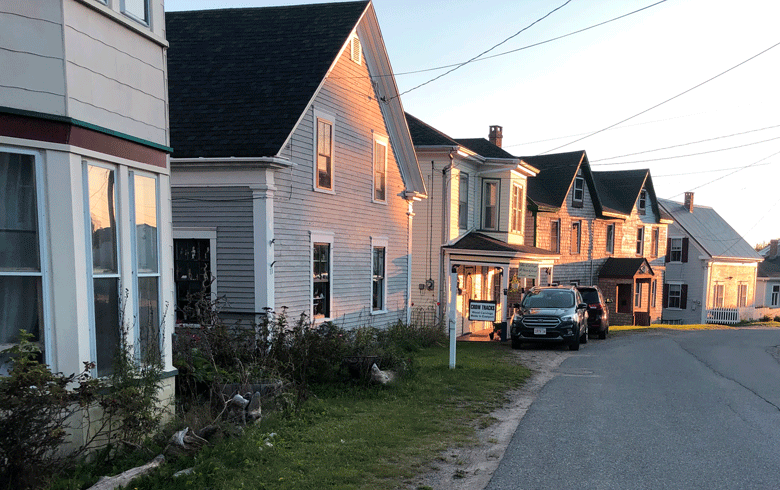Maine is not the only state to grapple with a lack of affordable housing. A combination of aging populations and aging housing stock has created an acute affordable housing shortage throughout the region.
Because of the steep costs and massive needs to build such housing, many nonprofits and local governments have taken innovative approaches to plan and create housing projects to meet the unique needs of their communities.
Here are a few that have made headlines:
In Connecticut, two affordable housing projects soon to be completed make use of some historic homes.
One group of mobile home residents in Franconia successfully organized to buy their 34-lot park…
In Hartford, construction has begun on the Clover Gardens project, which will create 32 units for mixed-income housing spread throughout four historic properties. When first proposed, the project faced criticism from local residents, who argued the neighborhood already had more than enough affordable housing, according to a Hartford Business Journal report.
And in Madison, on Connecticut’s coast, an 1808 historic home will become a 31-unit mixed-income apartment complex, with most of those units set aside for affordable rentals, according to The Connecticut Examiner.
Throughout the U.S., ethnic enclaves known as Chinatowns have been threatened by the forces of gentrification. In Massachusetts in 2020, Boston officials greenlit a project that would build a 168-unit skyscraper of rental units and owner-occupied apartments on a former parking lot in Chinatown. Chinatown residents will be given preference in a lottery for the affordable units, according to a Boston Globe report.
West of Boston, several affordable housing projects have focused on reconfiguring former industrial sites to create affordable housing. In Southbridge, the site of a former optical factory has already been used for a hotel and offices; now construction has begun on a 48-unit affordable apartment project, according to a Worcester Business Journal report.
Mobile home parks have long been considered an affordable housing option, but that is changing in New Hampshire as investors set their sights on projects they once overlooked. Recently, one group of mobile home residents in Franconia successfully organized to buy their 34-lot park, creating what is termed a resident-owned community (ROC). The Fox Hill Cooperative is aided by New Hampshire laws designed to facilitate home sales among ROC members, and the state is now home to some 139 ROCs, according to a Next City report.
Farther south, an affordable housing project for seniors gained distinction for being environmentally friendly. The Gilford Village Knolls project in Gilford was the first affordable, multi-housing unit in the state to be categorized as passive house-certified by the The Passive House Institute U.S. The apartment complex is situated to take advantage of natural sunlight and incorporates solar panels for power generation, according to The Laconia Daily Sun.
Vermont recently has had two affordable housing projects that focus on providing housing options for those 55 and older.
In Burlington, an affordable housing project called Juniper House opened its doors to 70 households in June. Applicants for the one- and two-bedroom apartments are restricted by age and income, according to a Burlington Free Press report.
The below-market rent includes laundry and many utilities, and the building is constructed to be energy efficient, with solar panels on the roof.
Construction has begun on a similar, if smaller-scale project to provide housing for those 55 and older in South Hero, near Burlington. The Bayview Crossing project represents the first new multifamily housing project undertaken within the island communities of Lake Champlain in 15 years, according to a VTDigger report.
Some affordable housing projects aim to ensure resources that residents need will be near the new housing. In Rhode Island, King Street Commons, an affordable housing project in Providence, will include space for childcare. The project, which creates 30 affordable units and revitalizes other existing units, also sets aside space for an 8,500 square-foot Head Start center, according to a WPRI report.
Elsewhere in the state, a non-profit is encouraging affordable housing recipients to put their own “sweat equity” into their future housing. Neighborworks Blackstone River Valley administers a program for a Pascoag project that asks qualified potential homeowners to commit to working nearly full-time to help with the construction of the affordable homes for nine months. In exchange, those potential owners lock in low interest rates and affordable mortgages, according to a non-profit’s report.





